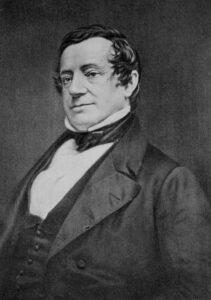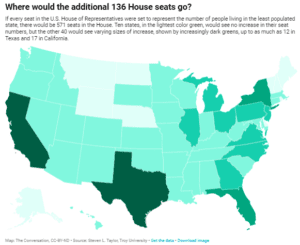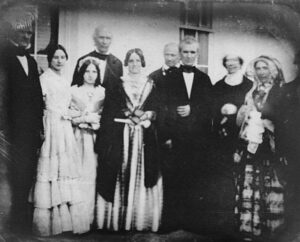
20 Oct GENEALOGIST-The power and joy caused by finding your family- Newsletter- October 22, 2022
Contents
- 1 GENEALOGIST- APPARENTLY, THE MOVIE WAS A BOX OFFICE BUST, BUT IT WAS AN INTERESTING STORY!
- 2 GENEALOGIST- The Business Plot (also called the Wall Street Putsch and The White House Putsch) was an alleged political conspiracy in 1933 in the United States to overthrow the government of President Franklin D. Roosevelt and install a dictator. Retired Marine Corps Major General Smedley Butler asserted that wealthy businessmen were plotting to create a fascist veterans’ organization with Butler as its leader and use it in a coup d’état to overthrow Roosevelt. In 1934, Butler testified under oath before the United States House of Representatives Special Committee on Un-American Activities (the “McCormack–Dickstein Committee”) on these revelations. Although no one was prosecuted, the congressional committee’s final report said, “there is no question that these attempts were discussed, were planned, and might have been placed in execution when and if the financial backers deemed it expedient.”
- 3
- 4 GENEALOGIST- IN 1828, 336 YEARS AFTER COLUMBUS SAILED THE OCEAN BLUE, THIS MAN CHANGED THE STORY TO COLUMBUS WORRYING ABOUT FALLING OFF THE EDGE OF THE FLAT EARTH
- 5
- 6 GENEALOGIST-DO WE NEED 257 MORE CONGRESSPEOPLE, OR SHOULD JUST MORE PEOPLE MOVE TO WYOMING?
- 7 GENEALOGIST- WAS THERE EVER A PRESIDENT WHO KEPT ALL OF HIS CAMPAIGN PROMISES?
- 8 GENEALOGIST- MY DAD’S LITTLE BLACK BOOK AND THE PURSE FROM THE 1950S WERE FOUND INSIDE THE WALLS OF A FORMER TEXAS SCHOOL
- 9
- 10 GENEALOGIST- EVEN DNA WAS PART OF THE COLD WAR. THE FIRST MENTION OF DNA (DEOXYRIBONUCLEIC ACID) IN NEWS ARTICLES WAS IN 1949.
- 11
- 12 GENEALOGIST- YOUR ANCESTORS ARE WAITING TO BE DISCOVERED!
 GENEALOGIST- APPARENTLY, THE MOVIE WAS A BOX OFFICE BUST, BUT IT WAS AN INTERESTING STORY!
GENEALOGIST- APPARENTLY, THE MOVIE WAS A BOX OFFICE BUST, BUT IT WAS AN INTERESTING STORY!
GENEALOGIST- The Business Plot (also called the Wall Street Putsch and The White House Putsch) was an alleged political conspiracy in 1933 in the United States to overthrow the government of President Franklin D. Roosevelt and install a dictator. Retired Marine Corps Major General Smedley Butler asserted that wealthy businessmen were plotting to create a fascist veterans’ organization with Butler as its leader and use it in a coup d’état to overthrow Roosevelt. In 1934, Butler testified under oath before the United States House of Representatives Special Committee on Un-American Activities (the “McCormack–Dickstein Committee”) on these revelations. Although no one was prosecuted, the congressional committee’s final report said, “there is no question that these attempts were discussed, were planned, and might have been placed in execution when and if the financial backers deemed it expedient.”
Early in the committee’s gathering of testimony, most major news media dismissed the plot, with a New York Times editorial characterizing it as a “gigantic hoax”. When the committee’s final report was released, the Times said the committee “purported to report that a two-month investigation had convinced it that General Butler’s story of a Fascist march on Washington was alarmingly true” and “… also alleged that definite proof had been found that the much-publicized Fascist march on Washington, which was to have been led by Major Gen. Smedley D. Butler, retired, according to testimony at a hearing, was actually contemplated”. The individuals involved all denied the existence of a plot.
While historians have questioned whether or not a coup was actually close to execution, most agree that some sort of “wild scheme” was contemplated and discussed.
GENEALOGIST- IN 1828, 336 YEARS AFTER COLUMBUS SAILED THE OCEAN BLUE, THIS MAN CHANGED THE STORY TO COLUMBUS WORRYING ABOUT FALLING OFF THE EDGE OF THE FLAT EARTH
Genealogist- In 1492, Christopher Columbus was shocked when his ship made landfall in a land Europeans had never explored. Along the way, he proved that Earth isn’t flat after all. Right?
Wrong: Despite a persistent legend, neither Columbus nor his Spanish patrons thought Earth was a finite plane instead of a round planet. And you can blame one of the United States’ greatest authors for creating a myth that still surrounds one of history’s best-known figures.
When Columbus set sail in 1492, he predicted he’d make landfall in Asia. Legend has it that he defied Spanish officials to do so, sailing west instead of East because he was certain the world was round.
There’s just one problem: It’s almost certain that in the 1490s, nobody thought the earth was flat. According to historian Jeffrey Burton Russell, “no educated person in the history of Western Civilization from the third century B.C. onward believed that the Earth was flat.”
That was thanks to scientists, philosophers, and mathematicians who, as early as around 600 B.C., made observations that Earth was round. Using calculations based on the sun’s rise and fall, shadows, and other physical properties of the planet, Greek scholars like Pythagoras and Aristotle determined that the planet is actually a sphere.
During Columbus’ time, educated people carefully studied knowledge passed down by the ancient Greeks. Thus, it’s nearly impossible—and completely implausible—that rich Spaniards of the late 15th century thought Columbus would fall off the edge of the map.
However, Columbus ran into resistance when he tried to get funding for his landmark journey for a different reason. He mistakenly believed that the circumference of Earth was very small and that by traveling west toward what he thought was China, he’d open up new trade routes. After years of negotiation and argument over the actual length of the proposed journey, he finally convinced Ferdinand II of Spain and his wife Isabella to finance the expedition.
The myth of Columbus’ supposed flat earth theory is tempting: It casts the explorer’s intrepid journey in an even more daring light. Problem is, it’s completely untrue. The legend doesn’t even date from Columbus’ own lifetime. Rather, it was invented in 1828, when Washington Irving (pictured above) published The Life and Voyages of Christopher Columbus.
Irving, a master storyteller, was already famous for tales like “Rip Van Winkle” and “The Legend of Sleepy Hollow” when he tackled the life of Columbus. His inspiration came after his friend, Alexander Hill Everett, the United States’ minister to Spain, invited Irving to stay with him in Madrid. While visiting the city, Irving was tempted by a gigantic archive of documents about Columbus and decided to write the explorer’s biography.
The archive may have been extensive, but Irving couldn’t help from adding fictional flourishes to Columbus’ already fascinating life. Crucially, he claimed that when the explorer told Spanish geographers the earth was not actually flat, they refused to believe him, even questioning his faith and endangering his life.
“Is there anyone so foolish, as to believe [in] people who walk with their heels upward, and their head hanging down?” one of the Catholic geographers supposedly exclaimed when Columbus told him the Earth was a circle and not a flat line.
The real fools were Irving’s readers, who were taken in by his inaccurate account. And when his book became a runaway bestseller, the supposed confrontation between the rational explorer and the dogmatic official was accepted as truth.
Over the years—and with the help of Antoine-Jean Letronne, a French author—the legend took hold. Even today, it’s a commonly held belief…even though it couldn’t be further from the truth.
Though Columbus never proved Earth was round, he did manage to upset long-held dogma in another way when he ran across a continent nobody in Europe even knew was there. (Of course, his “discovery” wasn’t new either as the Americas had been known to indigenous people for thousands of years, and Vikings since the 11th century.) He didn’t think Earth was flat, but by jumpstarting the Age of Exploration, he changed the course of human history.
ERIN BLAKEMORE
GENEALOGIST-DO WE NEED 257 MORE CONGRESSPEOPLE, OR SHOULD JUST MORE PEOPLE MOVE TO WYOMING?
Genealogist- As the population of the U.S. has grown over the past century, the House of Representatives has gotten worse at being representative of the people it serves. That doesn’t have to happen – and it wasn’t always the case.
The House is the one segment of the federal government that was created from the beginning to directly channel the views of the people to Washington, D.C. But over the past century, the ability of any individual members of the House to truly represent their constituents has been diluted.
When the nation was founded, there were 65 members of the House, representing 3.9 million people in 13 states. On average, that’s one House member for every 60,450 people.
Today, there are 435 members representing 331 million people in 50 states – or one House member for every 761,169 people.
This means American democracy is less representative, and not all citizens are politically equal.
Since 1913, the number of House seats has remained constant. But in the early years of the United States, the size of the House grew as the nation expanded. From 1791 to 1913, the House passed laws adding more seats in ways that reflected the admission of new states and the growing population. During the Civil War, when some Southern states seceded, the House actually shrank in size – and then resumed expanding as those states rejoined the Union and others were added.
The Congress that began in 1913 was the first to have 435 seats, representing just over 97 million people in 46 states – an average of 223,505 people per member of the House.
The number of seats in the House was fixed at 435 by law in 1929. But it is not a constitutional provision. It is a federal law, so it can be repealed or amended just like any other.
Since that time the country’s population has more than tripled.
Any changes would require a new law expanding the House, determining how many seats each state would get, and drawing new districts based on U.S. Census Bureau data to achieve relatively equal representation.
It might not be widely popular to send even more politicians to Washington, D.C. A larger House would also cost more to operate: The total cost for the House now averages US$3.4 million per member. But an improvement in democratic representation might be worth the effort.
If the House had kept pace with population growth since 1913, I calculate that there would be 1,560 seats now.
Comparative political analysts have identified a general mathematical principle about the size of a properly representative national legislature, called the “cube root law”: Many legislatures around the world have, by various processes, ended up with a number of seats roughly equal to the cube root of the population they represent. That is the number which, when cubed, or multiplied by itself and itself again, equals the population. That would put the U.S. House size at 692, with each seat representing an average of 478,480 people.
Another way to consider expanding the House would be to use what is known as the “Wyoming Rule.” It ensures the least populated state – currently Wyoming – would receive one House seat and uses its population as the basis for House districts in the other states. Each state’s House delegation would change in size over time, to remain roughly proportional to its population even as the nation grew and its people moved from state to state.
According to the 2020 census, that would mean each House district would represent approximately 577,719 people. There are several technical methods for assigning districts to the states because no other state’s population is evenly divisible by 577,719. But using a very basic method would produce a House with 571 seats.
California, the most populous state, has roughly 68 times as many people as Wyoming does. Under the current House size, it will have 52 seats in the Congress that begin in 2023. But under a simple version of the Wyoming Rule, it would have 69.
This would ensure all U.S. residents have roughly equal representation in the House, and it would better balance the Electoral College, though less populous states would continue to have an advantage because each voter has a larger influence on the two electoral votes from their senators. While the Electoral College will always disproportionately favor states with small populations, the more seats in the House means more electors to distribute, and the more electors there are the more fair the relative voting strength of each state.
Some states would be slightly over- or underrepresented, even under the Wyoming Rule, because state boundaries don’t line up evenly with population locations. But the disparity would be less than under the current 435-seat cap.
And it’s worth noting that this method would not address the fact that 670,000 Americans live in Washington, D.C.; 3.2 million live in Puerto Rico; and about 340,000 live in the other U.S. island territories of Guam, the Commonwealth of the Northern Mariana Islands, American Samoa and the U.S. Virgin Islands. None of them have ever been represented by full voting members of the House.
The Conversation Published: October 17, 2022.
 GENEALOGIST- WAS THERE EVER A PRESIDENT WHO KEPT ALL OF HIS CAMPAIGN PROMISES?
GENEALOGIST- WAS THERE EVER A PRESIDENT WHO KEPT ALL OF HIS CAMPAIGN PROMISES?
Genealogist- This historically significant picture of James and Sarah Polk on the portico of the White House alongside Secretary of State James Buchanan, and former first lady Dolley Madison.
President Polk had four main goals he set forth in his campaign:
1) Re-establish the Independent Treasury System, which was established by law in 1840, only to see it repealed in early 1841 when the Whigs took control of Congress and the White House.
2) Reduce tariffs.
3) Acquire some or all of Oregon Country (led by the slogan “Fifty-four forty or fight”, describing the latitudinal boundary through the territory that much of the US thought should be given to the US).
4) Get California and New Mexico from Mexico.
He also pledged to serve only one term as president.
So, how did he do?
1) The Independent Treasury Act was passed by Congress and signed by President Polk in August 1846.
2) Congress passed the Walker Tariff, reducing tariff rates from 32% to 25%. Polk signed this into law one week before signing the Independent Treasury Act.
3) In June of 1846, the US and Great Britain signed the Oregon Treaty setting the boundary between the US and British North America at the 49th parallel. Britain had been claiming land in Oregon as far south as the 42nd parallel. The US did indeed get some of Oregon Country.
4) In 1848, following the Mexican-American War, the Treaty of Guadalupe Hidalgo was signed to end the war formally. One of the terms of that treaty was that Mexico ceded Alta California and Santa Fe de Nuevo Mexico to the US. These territories comprised much of what is now California and New Mexico. In 1854, after Polk’s term in office, the US purchased the remainder of what is now New Mexico (and a little of Arizona) from Mexico in the Gadsden Purchase.
He served from 1845–1849, one term, declining to run for re-election.
Sounds like he kept all of his promises to me!
 GENEALOGIST- MY DAD’S LITTLE BLACK BOOK AND THE PURSE FROM THE 1950S WERE FOUND INSIDE THE WALLS OF A FORMER TEXAS SCHOOL
GENEALOGIST- MY DAD’S LITTLE BLACK BOOK AND THE PURSE FROM THE 1950S WERE FOUND INSIDE THE WALLS OF A FORMER TEXAS SCHOOL
Genealogist- When going through my father’s belongings, I came across his little black books. I had heard the story growing up that all of my dad’s girlfriends including my mom’s names started with the letter D.
There were no stars next to any names, but Wanda’s name spoiled the story.
The names were all rare enough that I went and looked for the ladies or their descendants who might be interested in this memento from the past. I was able to find one descendant of one of his old girlfriends. Her mom had recently passed, so she was excited to see the connection to our parent’s past.
Along similar lines-
Oct. 10 (UPI) — Officials in a Texas city said a small purse from the 1950s was found inside the walls at a former school building — and they have now identified the owner.
The League City Historical Society and the Clear Creek Independent School District said the purse was recently found during renovation work at the League City Community Center, which formerly served as the League City School.
“The purse was full of what looked like a wallet and it turned out to be a diary. Picture it as today’s Facebook: you’re putting everything down. She wrote about her love life, who she broke up with,” League City Historical Society Vice President Richard Lewis said in a video posted to Facebook.
The purse contained the name “Beverly Williams” and numerous photos dating back 50-70 years.
Officials said they were able to contact the family of Williams, who attended the school in the 1950s. Williams, who was born in 1945, died in September 2016.
The officials said they were able to speak to Williams’ daughter.
“She was blown away by what we said to her,” Lewis told the Houston Chronicle.
The historical society said it would reveal more details about the purse discovery at its Oct. 27 meeting.
By Ben Hooper
GENEALOGIST- EVEN DNA WAS PART OF THE COLD WAR. THE FIRST MENTION OF DNA (DEOXYRIBONUCLEIC ACID) IN NEWS ARTICLES WAS IN 1949.
Genealogist- I also saw this article that not only do we give our children our features, and our personality, 8% of our genome is made of ancient viruses.
Read more here: https://theconversation.com/humans-are-8-virus-how-the-ancient-viral-dna-in-your-genome-plays-a-role-in-human-disease-and-development-192322
GENEALOGIST- YOUR ANCESTORS ARE WAITING TO BE DISCOVERED!
Genealogist- Reach out to Dancestors and let us research, discover, and preserve your family history. No one is getting any younger, and stories disappear from memory every year and eventually from our potential ability to find them. Paper gets thrown in the trash, and books survive! So do not hesitate, and call me @ 214-914-3598.


 GENEALOGIST- APPARENTLY, THE MOVIE WAS A BOX OFFICE BUST, BUT IT WAS AN INTERESTING STORY!
GENEALOGIST- APPARENTLY, THE MOVIE WAS A BOX OFFICE BUST, BUT IT WAS AN INTERESTING STORY!

 GENEALOGIST- WAS THERE EVER A PRESIDENT WHO KEPT ALL OF HIS CAMPAIGN PROMISES?
GENEALOGIST- WAS THERE EVER A PRESIDENT WHO KEPT ALL OF HIS CAMPAIGN PROMISES? GENEALOGIST- MY DAD’S LITTLE BLACK BOOK AND THE PURSE FROM THE 1950S WERE FOUND INSIDE THE WALLS OF A FORMER TEXAS SCHOOL
GENEALOGIST- MY DAD’S LITTLE BLACK BOOK AND THE PURSE FROM THE 1950S WERE FOUND INSIDE THE WALLS OF A FORMER TEXAS SCHOOL
